US missile ranges. 1-Part I
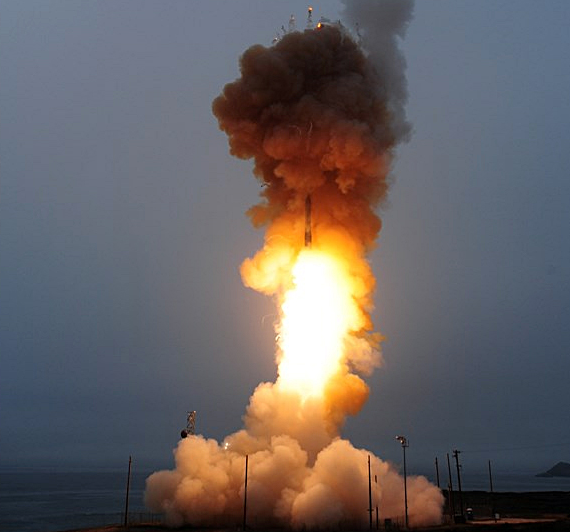
6 February 2016 of the year on the "Military Review" published a lot of controversy publication: "Another successful test of an improved anti-missile GBI" (more details here: Another successful GBI advanced anti-missile test). In this article, in addition to interesting technical details, there are also high-quality photographs from American missile test sites: Vandenberg Air Force Base (California) and “The Missile Defense Army Missile Defense Test Complex”. Ronald Reagan "(Kwajalein Atoll). In this regard, I would like to tell you in more detail about the numerous American missile test sites and spaceports.
Tests of ballistic missiles in the United States began shortly after they got acquainted with German trophy rocketry and emigration from Germany of a number of German specialists who had previously created combat German A-4 ballistic missiles (V-2 or V-2). Werner von Braun, the “father” of the American space program, was among the Germans who arrived in America. After the war, about 100 of collected missiles were delivered from Germany. From 1946 to 1952, the 63 test-launched German missiles were launched in the USA in the United States, including one launch carried out from the deck of a US aircraft carrier. In 1946 — 1953, several samples of American missiles of various purpose were created on the basis of A-4 within the framework of the “Hermes” program, but none of them were brought to mass production.
But this does not mean that research in the field of rocket technology was not conducted in the United States before exploring German samples. The name of one of the pioneers of modern rocket technology, Robert Goddard, is widely known. This prominent American scientist was the founder of American research in the field of jet propulsion. 16 March 1926 he for the first time in the United States carried out a successful launch of a liquid-propellant rocket. Robert Goddard received patents on the rocket control system using a gyroscope and on the use of multistage rockets to achieve great heights. He developed a number of key components of rocket engines, such as fuel pumps. In 1935, Robert Goddard launched a liquid-propellant rocket that developed supersonic speed.
So there were own developments in rocket technology in the USA, and besides testing the captured German missiles, the Americans conducted several of their own projects, more technologically advanced than the German samples. One of the developments - WAC Corporal has reached the stage of practical implementation. Launched in September 1945, a research and development sample of a liquid rocket, whose engine worked on red, steaming nitric acid and hydrazine, reached the apogee of the trajectory in 80 kilometers. This prototype rocket eventually served as the basis for the corporal MGM-5 tactical missile, which became the first controlled nuclear ballistic missile adopted by the US Army.
For testing American 9 ballistic missiles in July 1945, in the desert in the state of New Mexico, a White Sands missile test site with an area of about 2,400 km² was created. Simultaneously with the construction of a missile test site in this area, preparations were made for testing the first American nuclear explosive device. From 1941, the military used the area to conduct test artillery firing and test new explosives and high-power ammunition.
In July, the White Sands 1945 completed the construction of a test bench, which was a concrete well with a channel at the bottom for releasing a gas jet in the horizontal direction. The rocket when testing the engine was placed on top of the well and was fixed with the help of a solid steel structure equipped with a device for measuring the thrust force of the rocket engine. In parallel with the stand, the construction of launch pads, hangars for the assembly of missiles, control and measuring stations and radar for trajectory measurements of the flight of missiles was conducted. By the time the tests began, a large part of the German specialists headed by Werner von Braun had moved to a residential town built nearby.
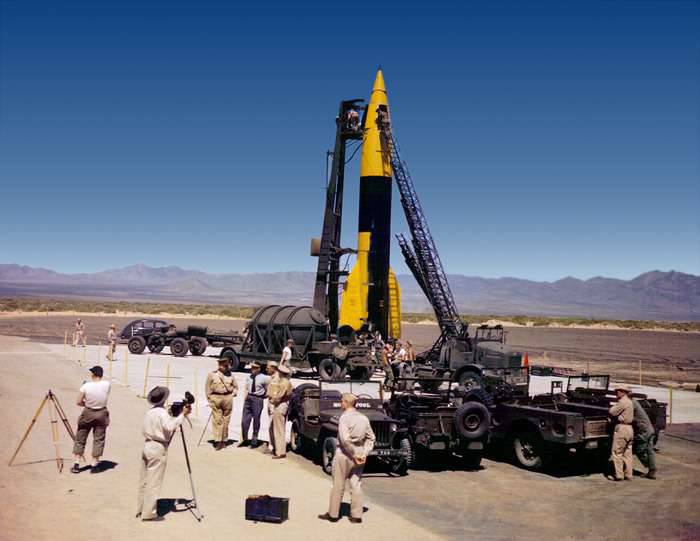
10 May 1946 for the first time from the White Sands landfill was able to launch the V-2 successfully. Despite the fact that the American analogue of the V-2 was never put into service, test launches at White Sands allowed American designers and ground calculations to gain invaluable practical experience and determine further ways to improve and use rocket technology. In addition to practicing the combat use of captured missiles, launches were carried out with the research objectives of studying the upper layers of the atmosphere. In October 1946, the V-2 rocket launched from the White Sands launch pad reached an altitude of 104 km. A camera mounted on board the rocket automatically took pictures every half a second of flight. The film, placed in a special high-strength cassette made of steel, after the fall of the rocket remained intact and the scientists at the disposal of the unique at that time high-quality photos of the test area. This demonstrated the fundamental possibility of using missiles for reconnaissance purposes. In December, 1946, another rocket reached altitude - 187 km, this record lasted until 1951.
In 1948, Convair RTV-A-2 Hiroc missiles were launched here - this was already a purely American development. Ballistic missile tests continued until the early 50s, later on this test site was mainly tested anti-aircraft missiles MIM-3 Nike Ajax and MIM-14 Nike-Hercules, anti-missile systems LIM-49 Nike Zeus and Sprint, as well as military operational-tactical complexes. Due to the peculiarities of the geographical location of the White Sands test site, it was impossible to accurately simulate the trajectory of a ballistic missile entering the atmosphere, launched from the mainland of the United States when it was intercepted by an interceptor missile. In addition, the debris of missiles falling from a great height along an unpredictable trajectory could pose a threat to the population living in the area. At the moment, most of the research carried out here in the field of air defense and missile defense has been transferred to other test sites for security reasons, but tests of MLRS, artillery, aviation and anti-aircraft weapons systems continue to this day.
Large exercises of the army, air force and naval aviation were regularly held in this area. Here they carry out tests of rocket fuel components and jet engines for spacecraft. A control point for a satellite communication system is also located on the landfill.
Part of the landfill is open for visiting by excursion groups. The exposition of the White Sands Rocket Test Site Museum has more than 60 rockets. Here you can get acquainted with the US nuclear program, get information about the first flights into space and the development of various types of missiles.
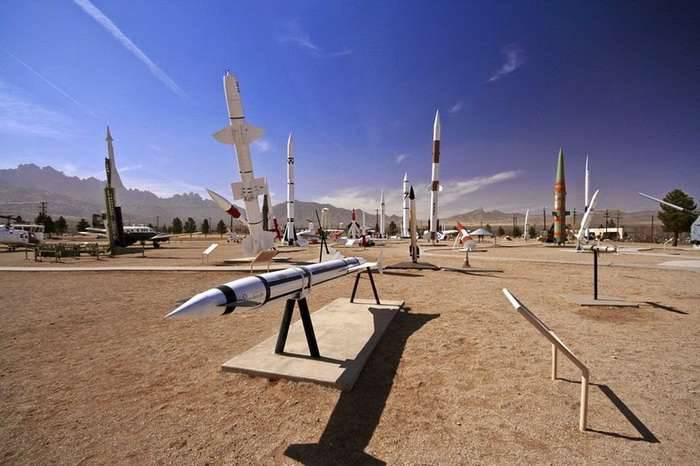
In addition to visiting the museum, tours to the site of the first American test nuclear explosion known as Trinity are organized. Currently, the level of radiation in this place is no longer a threat to health. In the area of the explosion within a radius of several hundred meters, feldspar and quartz under the influence of high temperature fused into a light green mineral called trinitite. For a fee, you can get a small amount of trinitite as a souvenir.
In 1950, a group of German specialists headed by Werner von Braun moved to the Redstone Arsenal in Huntsville, Alabama, where the Headquarters of the Aviation Missile Command is currently located. Until the end of the 40s, the development and production of incendiary and chemical munitions was carried out in the Redstone arsenal. Compared to the desert of the White Sands test site, the conditions for permanent living and working in Huntsville were much better. The first American short-range ballistic missile developed by the team of V. von Braun was called PGM-11 Redstone. The technical solutions incorporated in this rocket were later used to create the Jupiter MRSD, Juno-1 and Saturn launch vehicles. In 1959, the Redstone Arsenal unit was handed over to NASA. The George Marshall Space Flight Center was established on this territory.
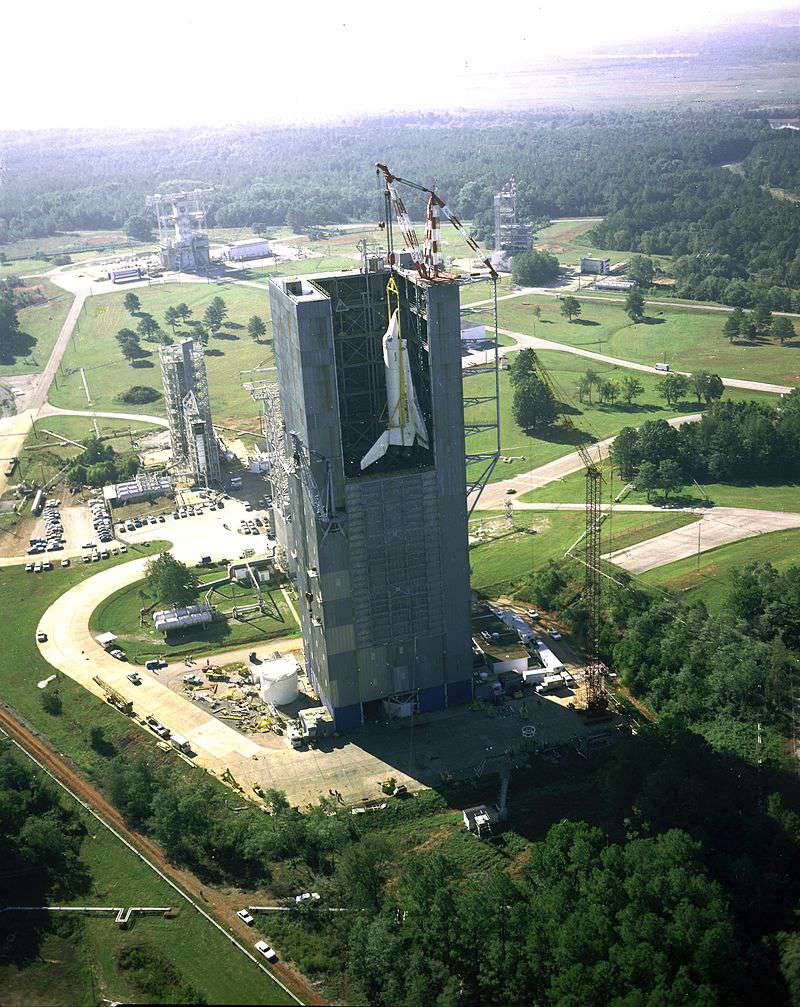
In addition to the creation and testing of the Redstone, Atlas, Titan, and Saturn rockets, the center's specialists participated in the development of the Mercury, Gemini and Apollon spacecraft, Shuttle engines and the ISS American module. A special pride of the center is the moon rover created here, in which the astronauts moved on the surface of the moon. In recent years, the main efforts of the center's staff are aimed at developing new Ares family LVs and the super heavy SLS carrier.
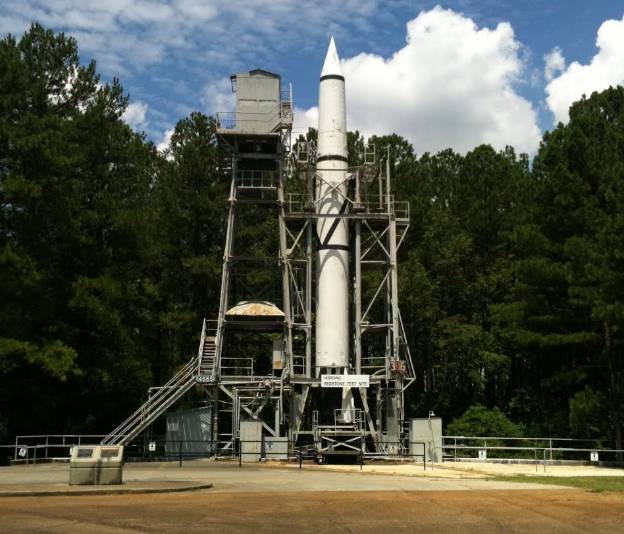
Work on the creation of rocket technology in Huntsville demanded the creation of laboratory and testing facilities. In the southeastern part of the arsenal, a test complex was erected with several stands for firing tests of rocket engines.
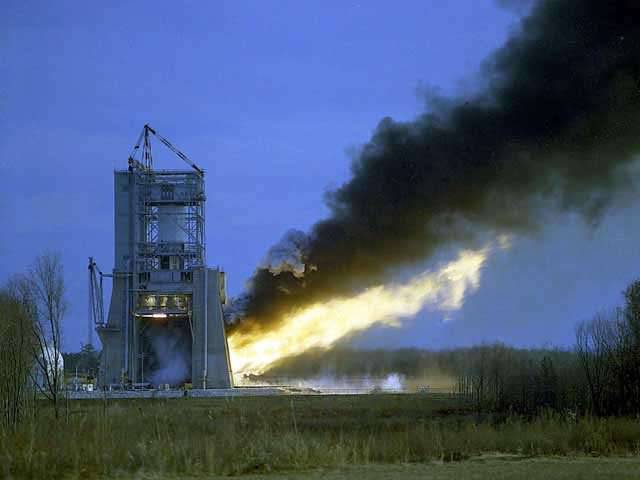
But due to security concerns, missile test launches from the Redstone arsenal were impossible. In this case, the missiles would have to fly over the densely populated areas of the United States and the inevitable failures in the process of testing the missile technology could lead to the death of people in the event of the fall of the missiles or their stages.
For this reason, the Eastern Rocket Test Site was deployed at Cape Canaveral at the US Air Force base. It was founded in 1949 by President Harry Truman as the “United Long Range Test Site”, and in 1951, the “Missile Test Center” owned by the US Air Force was established here. About 30 km of coastline was allocated for the construction of launch complexes. The location for the test site turned out to be very well chosen, its geographical position made it possible to launch safe heavy rockets across the Atlantic Ocean, and the test site was closer to the equator than much of the US territory. This made it possible to increase the weight of the payload and save fuel when putting cargo into orbit.
The first 24 rocket launched at Cape Canaveral on July 1950 was the two-stage Bumper V-2, which was a conglomerate of the German V-2 and the American research WAC Corporal.
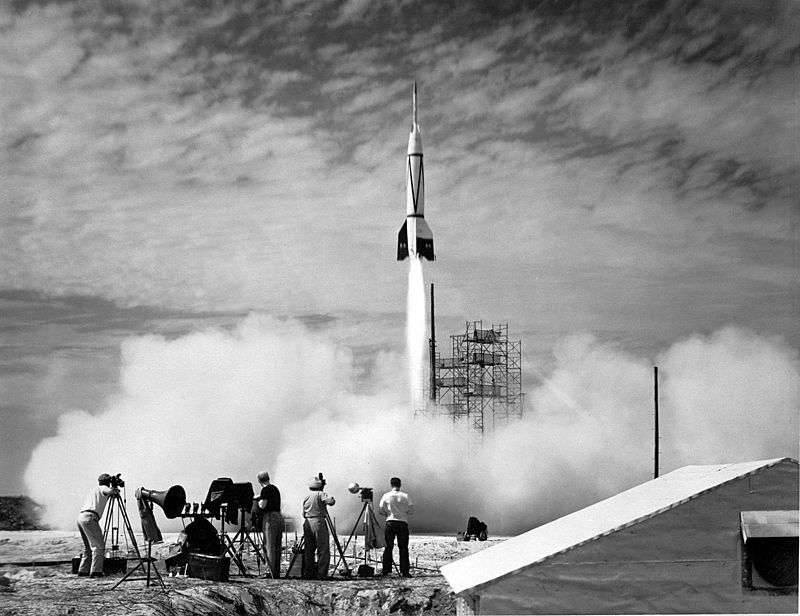
Starting from 1956, the launching tables of the Vostochny Polygon were launched by the American Viking series suborbital missiles. 6 December An unsuccessful attempt was made to launch the first American artificial satellite. The Vanguard TV1957 three-stage booster exploded on the launch pad with a large crowd of reporters. At the same time, the satellite survived and was thrown off by an explosion, falling to the ground at a short distance with the radio transmitter still working.
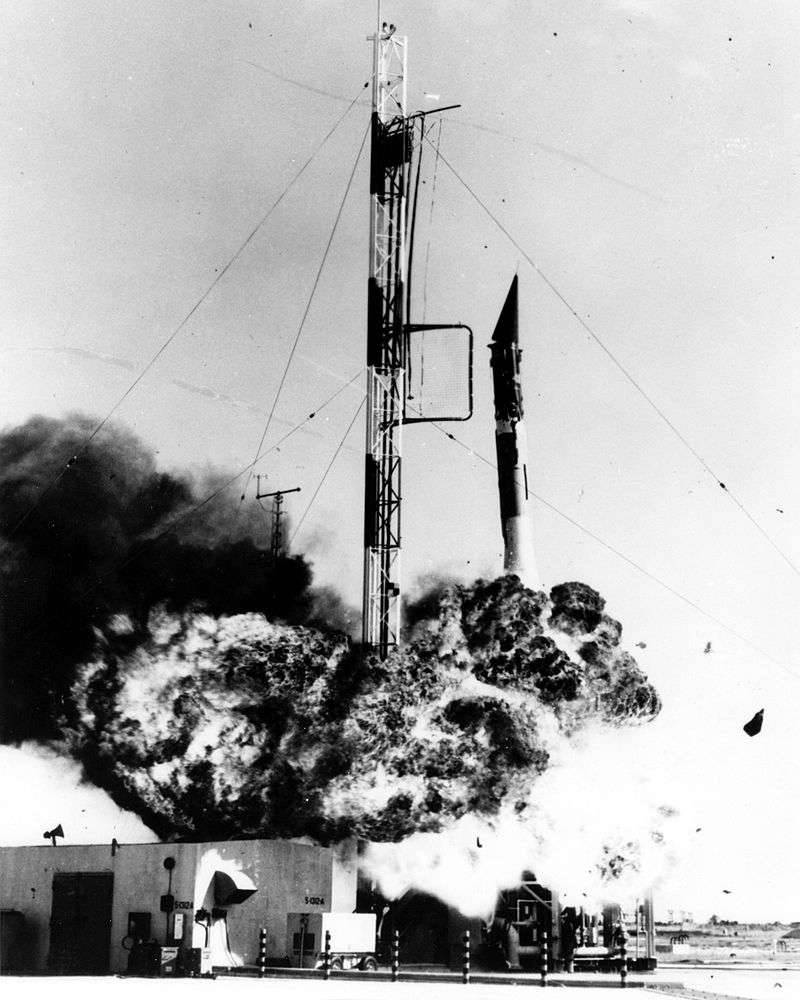
After the establishment of NASA in the 1958 year, from launch sites of Cape Canaveral owned by the Air Force, launch vehicles were launched to explore outer space, including the early manned Mercury and Gemini programs.
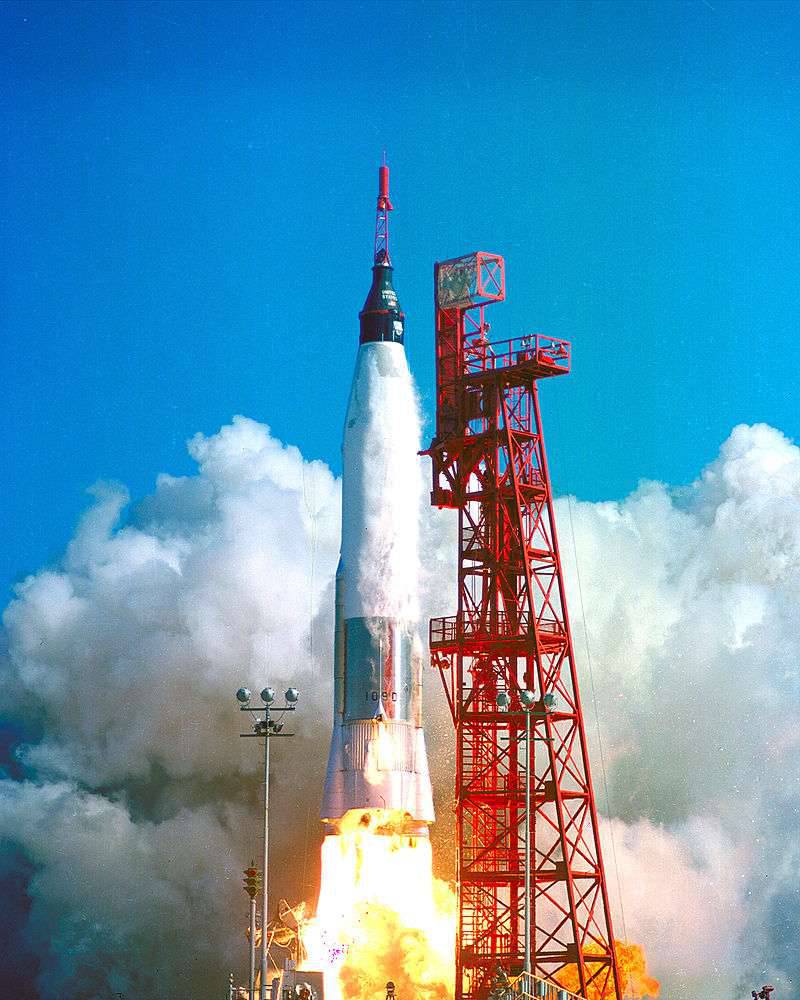
It tested combat missiles: PGM-11 Redstone, PGM-19 Jupiter, MGM-31 Pershing, UGM-27 Polaris, PGM-17 Thor, Atlas, Titan and LGM-30 Minuteman. On the basis of the Tor rocket, the Delta launch vehicle was created, with the help of which the Telstar-1 satellite was launched in July 1962. In order to expand the capabilities of the Titan-3 and Titan-4 missiles for delivering heavy loads to orbit in 60-s, additional launch complexes were built. They were used to launch communications, military reconnaissance and meteorological satellites, as well as for the implementation of NASA planetary missions.
Google Earth snapshot: Air Force launch complexes at Cape Canaveral and the Kennedy Space Center
In total, 38 launch sites were built on the territory of the Eastern Rocket Range, of which only 4 are operating today. Until recently, they launched Delta II and IV missiles, Falcon 9 and Atlas V. 22. On April 2010, the Atlas V launch vehicle was successfully launched. The reusable unmanned spacecraft Boeing X-37 was launched into Earth orbit. It is noteworthy that the American RD-180 engines were used on the American Atlas V PH.
North of the "Eastern Missile Range" of the US Air Force, on the island of Merritt is located the John Fitzgerald Kennedy Space Center, owned by NASA, with an area of about 567 km². The construction of the space center began in 1962, during the implementation of the Lunar Program, as it became too crowded at the nearby missile range. In addition, for conducting research space programs, special equipment and facilities were needed, in which the military was not interested. Initially, by the year 1966 were built: the control center, the launch complex for the Saturn V missiles, the rocket hangar and the vertical building for assembling and testing the missiles with their subsequent transportation to the launch pad. To test the readiness of personnel and equipment before the launch of the Saturn V, launches of the lighter Saturn I launch vehicles and ICBMs.
After the air force chose the heavy carriers of the Titan III and the Titan IV, NASA also built two launch sites for them at its launch site. The rocket launcher “Titan III” could put into space the same load as the rocket launcher “Saturn”, but were significantly cheaper. In the middle of 70, the main carriers for NASA were the Titan-Centaurus rocket launcher, which was used to launch Viking and Voyager vehicles. Until July 2011, the Kennedy Space Center was the launch site for the Space Shuttle, using the launch facility with the Apollo infrastructure. The first ship, Colombia, was launched on 12 on April 1981. On the territory of the center there is a landing strip with a length of 4,6 km for landing "shuttles".
A part of the territory of the Kennedy Space Center and the Oriental Missile Range is open to the public, there are several museums, cinemas and exhibition venues. On the territory closed for free access organized sightseeing bus routes. The bus tour worth 38 dollars includes: a visit to the launch pads and the Apollo-Saturn V center, an overview of the tracking stations.
Of greatest interest to visitors is the museum complex "Apollo-Saturn V". It is built around the most valuable exhibit at the exhibition - the Saturn V launch vehicle and other space-related exhibits, such as the Apollo descent capsule.
For all its merits, the Kennedy Space Center and the Eastern Rocket Test Site have a slight drawback, due to the presence of settlements under the trajectories of Cape Canaveral, which is not suitable for launching in a westerly direction. For this reason, for such launches, launch pads of the Western Missile Range at Vandenberg Air Force Base (California) on the US Western Pacific Coast are used. Vandenberg Air Base occupies an area of about 462 km².
The base was founded in 1941 year as a training ground for the US Army. In 1957, after the transfer of the Air Force, it was transformed into a ballistic missile testing center. The location of the launch complexes of the Western Missile Range on the Pacific coast - unlike the launch sites at Cape Canaveral, facilitates the launch of satellites into the polar orbit. The launch takes place in the course of the Earth’s rotation, which is well suited for launching reconnaissance satellites. The proximity of launchers to the coast and remoteness from populated areas makes the "Western Test Site" a very good place to conduct tests of intercontinental ballistic missiles and launch spacecraft. The first Thor ballistic missile was launched on December 16 1958. Subsequently, ballistic missiles were tested here: Atlas, Titan-1 / 2, Minuteman-1 / 2 / 3 and MX. In the area of the base also tested the American combat railway missile systems "Midzhitmen". The test launches of the ICBM “Minuteman” and “MX” accounted for almost half of the number of missile launches of all types. In addition to the tests, the mine-based launchers available at the base were used to carry the combat duty of the ICBMs. The anti-missile laser system was tested at the test site. weapons airborne, mounted on a Boeing 747-400. Six radar and optical tracking stations have been built on the dominant heights around the landfill. Trajectory measurements and reception of telemetric information of test launches from the “Vandenberg” base are also carried out by technical means of the Point-Mugu measuring station located in 150 km to the south.
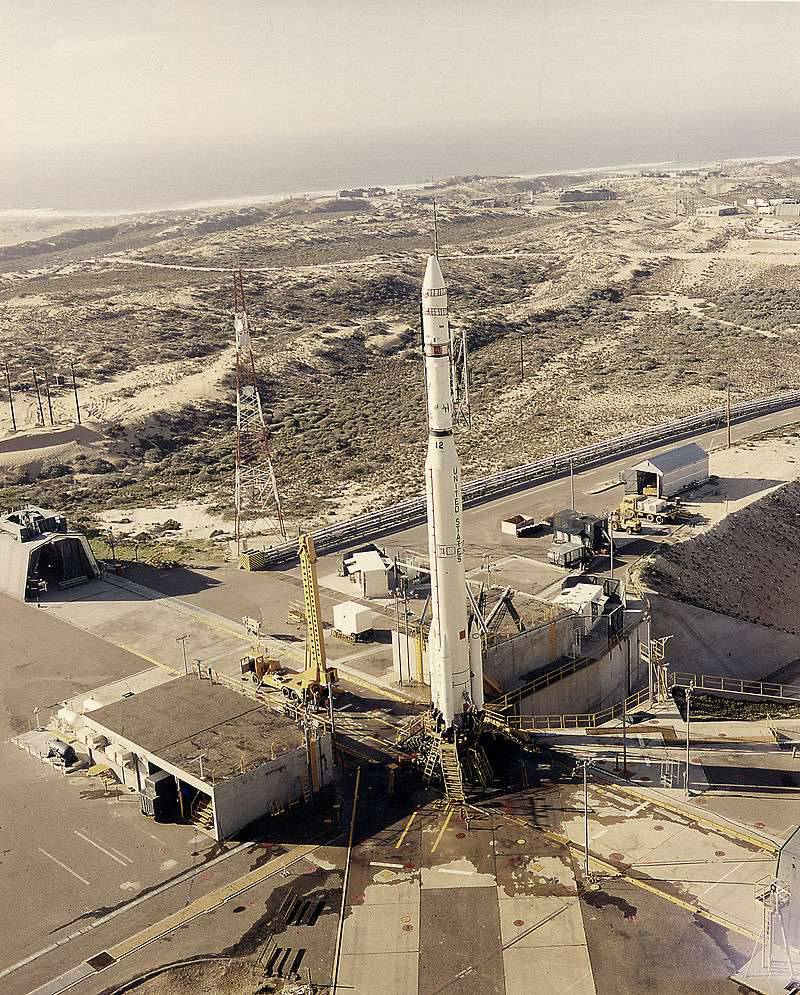
28 February 1959 launched the world's first polar-orbiting satellite Discoverer-1 from the “Western Polygon” on the Tor-Agen carrier rocket. As it became known later, Discovery was a cover for the secret reconnaissance program Korona, which started after a high-altitude reconnaissance aircraft U-2 was shot down over the USSR. Within the framework of this program, reconnaissance satellites of the KH-1, KH-2, KH-3, KH-4, KH-4A and KH-4B (144 satellite) series were launched. On board the satellites there were long-focal wide-format cameras; with their help, it was possible to obtain high-quality images of Soviet nuclear and missile test sites, strategic aviation airfields, positions of ICBMs and defense enterprises. However, in addition to purely military programs, the launch positions of the “Western Missile Range”, although on a smaller scale than the “Eastern Missile Range”, were also used to launch research spacecraft. So, the launch vehicle "Titan-2" from here launched the space probe "Clementine" to study the moon and deep space.
At the beginning of the 70's, “Vandenberg” was chosen as the launching and landing site for the manned reusable space shuttle. To this end, the launch complex, previously designed to launch Titan-3 missiles, was re-equipped. The existing runway base was extended to 4580 m.
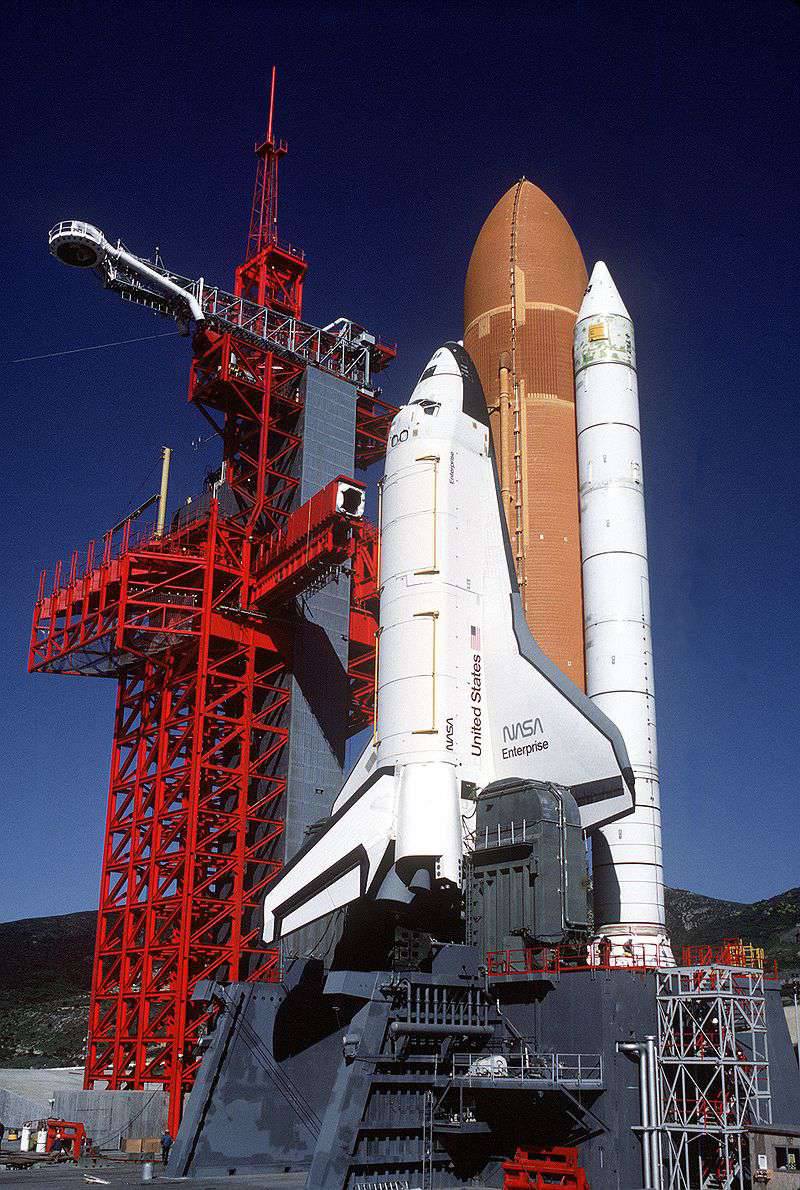
In 1985, the launch facility was tested using the Enterprise shuttle prototype. This device was not designed for flights into space, it served for all sorts of tests and testing landing in manual control mode. However, after the death of 15 on October 1986 of the Shuttle shuttle, the program for launching reusable spacecraft from the launch site of the Western Polygon was turned off. After that, the launch complex was once again rebuilt and was used to launch polar-orbiting satellites by the new family of launch vehicles Delta-4.
At the moment there are eleven launch complexes on the base, of which six are active. Launch facilities of the Vandenberg airbase are designed to launch carrier rockets: Delta-2, Atlas-5, Falcon Hevi, Delta-4, Minotaur. 16 June 2012 of the year on the base of the database in automatic mode landed reusable unmanned spacecraft Boeing X-37. Prior to that, he spent 468 days in orbit circling the Earth more than seven thousand times. The reusable X-37 shuttle is designed to operate at altitudes from 200 — 750 km, can quickly change orbits, and is capable of performing reconnaissance and delivery tasks into outer space and back small loads.
In addition to launching spacecraft from the silos, located in the vicinity of the landfill, test and test fires of the Minuteman-3 ICBM are regularly conducted. The last launches of the two missiles were carried out in March 2015. Along the coast, to the north, at a distance of 10-15 km from the runway base, are located 10 supported in working condition of MBR launchers.
The Vandenberg Air Base plays a key role in the US missile defense program. The launch complex, known as 576-E, is used to test GBI interceptors. 28 January 2016 of the United States Agency for Missile Defense conducted a successful flight test of an improved ground-based anti-missile. Reportedly, the purpose of this test was to test the operation of the upgraded interceptor missile steering engines, as well as troubleshooting, identified during the test launch in June 2014 of the year. According to information published in open sources, as of 2013 year, four GBI anti-missiles were deployed in silo, left over from the Minuteman-3 ICBM. The total number of anti-missile systems deployed at the Vandenberg base is planned to be increased to 14 units.
On the territory of the base there is a museum complex known as the “Center of Rocket and Space Heritage”. It is located in the launch complex number 10 - the place where the test launches of the Thor and the Discovery satellite launched. The museum exposition tells about the stages of development of the base from the very moment of its creation. It covers the military, commercial and scientific fields of activity in space exploration and is divided into two parts: "The development of technology" and "The chronology of the Cold War." The museum has a collection of all models of launch complexes used at the base, rocket engines, models of reusable space vehicles. In specially equipped cinema halls with the use of special audio and video effects, video clips about the tests of rocket technology and the stages of space exploration are shown.
The sparring partner of the Western Missile Test Ground in the test of anti-missile systems is “The test complex for the anti-missile defense of the Army. Ronald Reagan "on Kwajalein Atoll. As a rule, it is from here that the launching of target rockets for testing GBI antimissiles occurs. Eleven islands of the atoll are under the jurisdiction of the US armed forces in accordance with the long-term lease agreement concluded with the Republic of the Marshall Islands. The lease expires in 2066, with the option of automatically extending the lease to 2089. The total area of the leased territory is 14,3 km² or 8% of the total area of the Marshall Islands. The construction of the missile range began in 1959, and in 1999, it was named after Ronald Reagan.
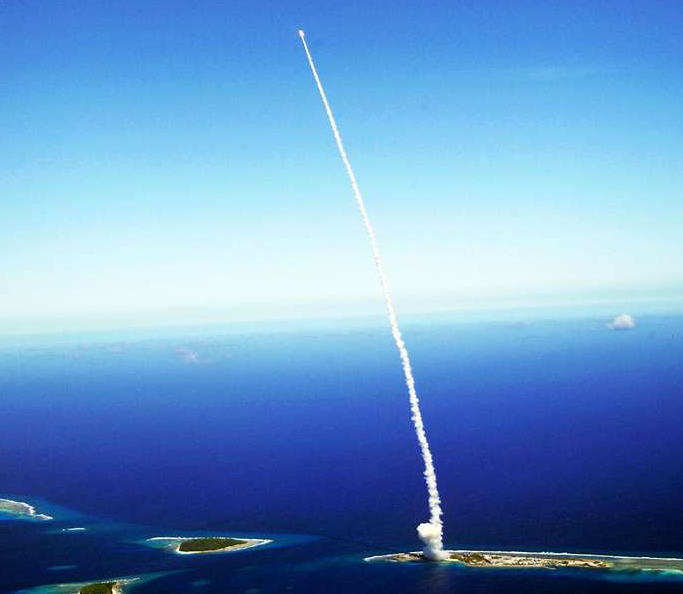
The Americans have invested very serious money in the technical equipment of the landfill. In 2015 alone, 182 million was allocated for infrastructure development and maintenance. On the eight islands of the atoll, in addition to launch complexes for launching missiles, a network of radar, optoelectronic and telemetry stations was built, designed to detect, track and recognize missiles and warheads and remove telemetry information about flight parameters from them. On the six islands of the atoll installed automatic digital film theodolites. All monitoring and tracking devices are interconnected by listening-protected fiber optic cables. Data received from tracking stations and telemetry is transmitted via the HANTRU-1 submarine cable to the island of Guam. In this area there is also a target field for ballistic missiles. The coordinates of the points of impact of military units are recorded by a special SDR-type radar station. To fix the time of the landing of tested warheads, the HITS system with a network of hydroacoustic sensors was installed in the lagoon of the Kwajalein Atoll.
In 60-70-ies, tests of anti-missile missiles "Sprint" and "Spartan" were conducted on Kwajalein. Mine launchers of the Spartan anti-missile missile, as well as platforms for deploying the launch equipment of the Sprint anti-missile missile are built on the islands of Mek and Illeginny. After the closure of these programs, ballistic and meteorological rockets were launched from the landfill. The landfill is serviced by ground forces, but its activities are carried out jointly with the relevant services of the Air Force and Navy. The technical services of the test site also interact with NASA, carrying out maintenance and exchange of information with orbiters of the US space agency.
In addition to the Kwajalein Atoll, launch complexes are available on the islands of Omelek, Wake and Aur Atoll. On the island of Omelek, which is part of the landfill, in 2004, the launch pad was built to launch the Falcon-1 launch vehicle, created by SpaceX private company. When starting Falcon-1, a reusable first stage is used. In total, four attempts were made to bring the payload into orbit from Omelek Island. The first two launches ended unsuccessfully, the third rocket put a mass-dimensional satellite model into orbit. July 13 The first successful commercial launch of the Malaysian satellite RazakSat was carried out on July 2009.
Based on:
http://pentagonus.ru
http://www.redstonearsenal.net
http://geimint.blogspot.com
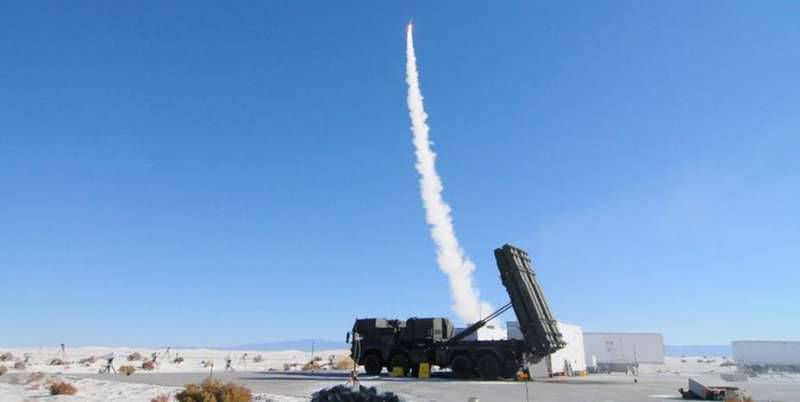
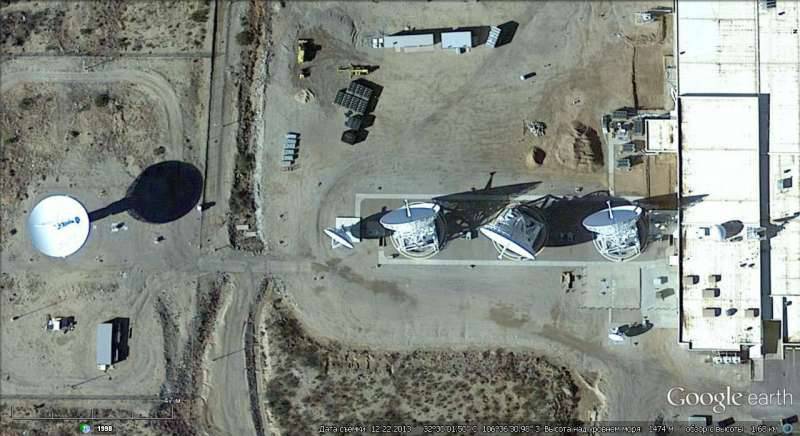
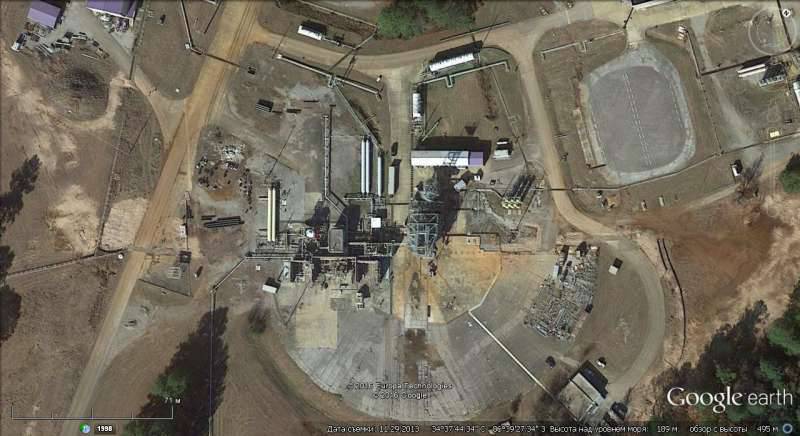
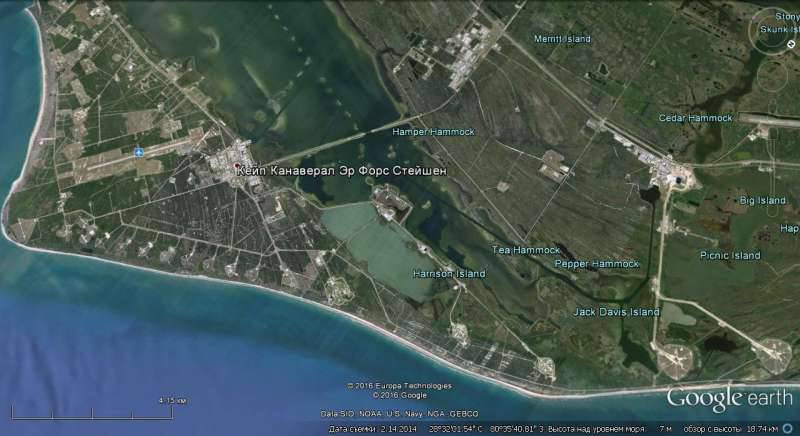
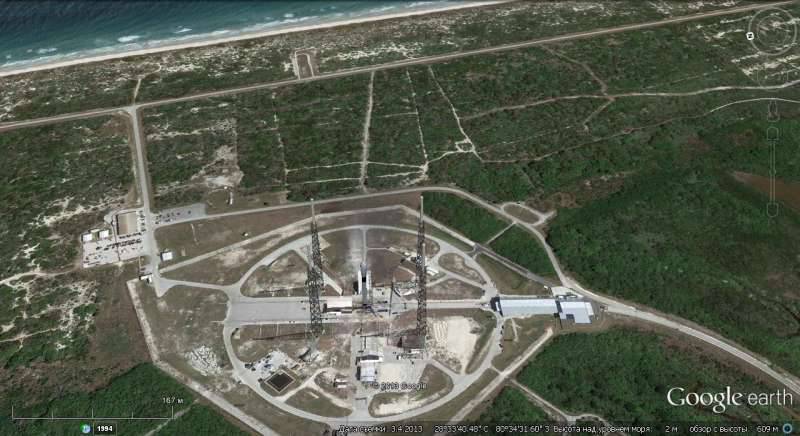
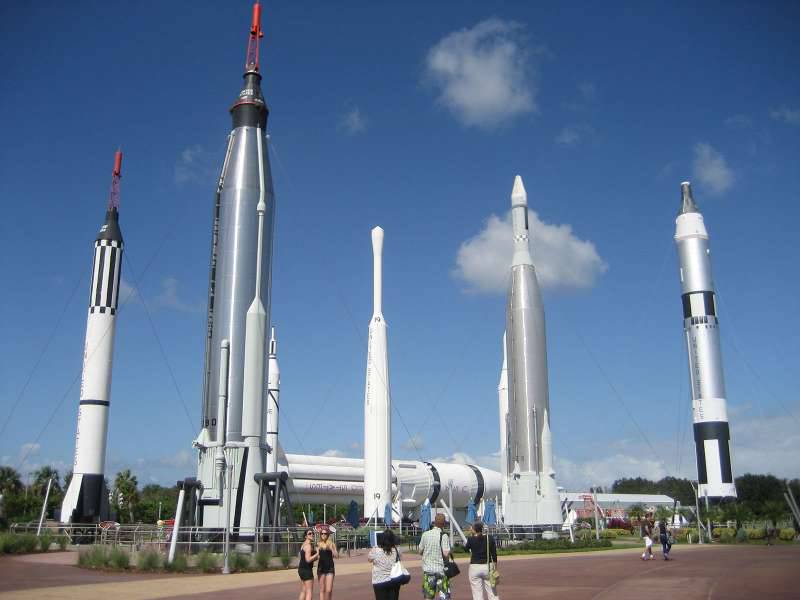
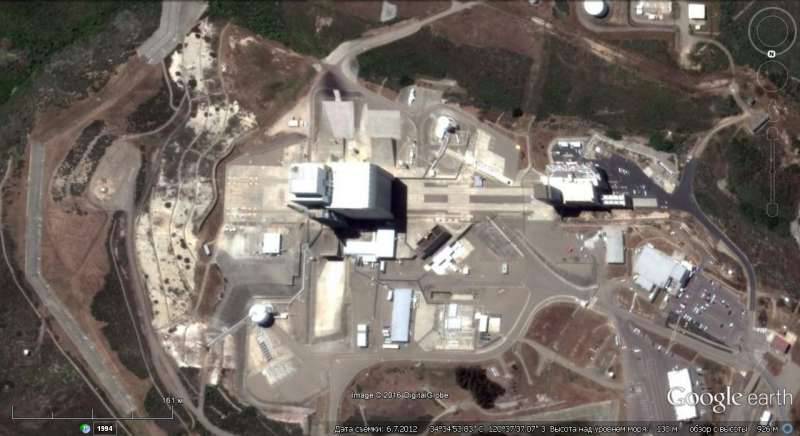
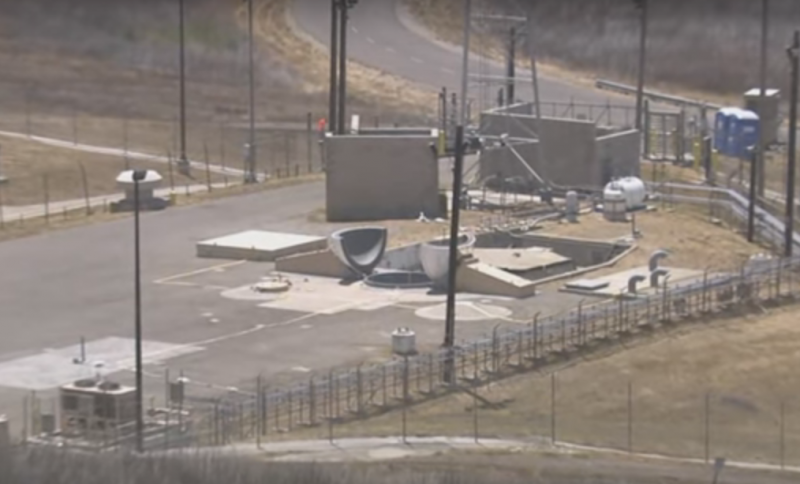
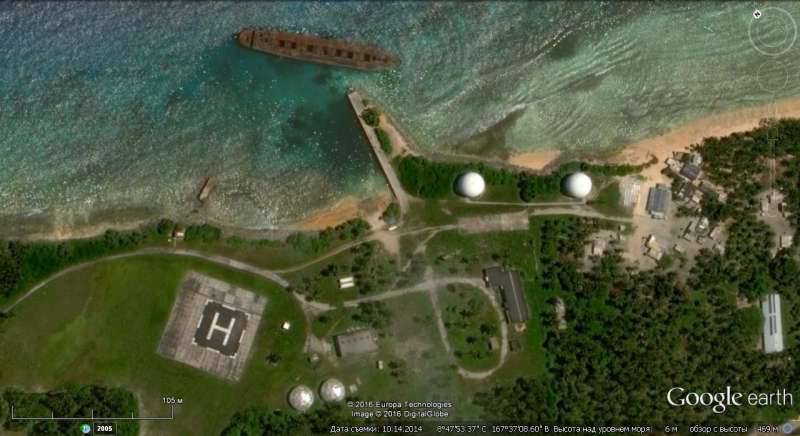
Information